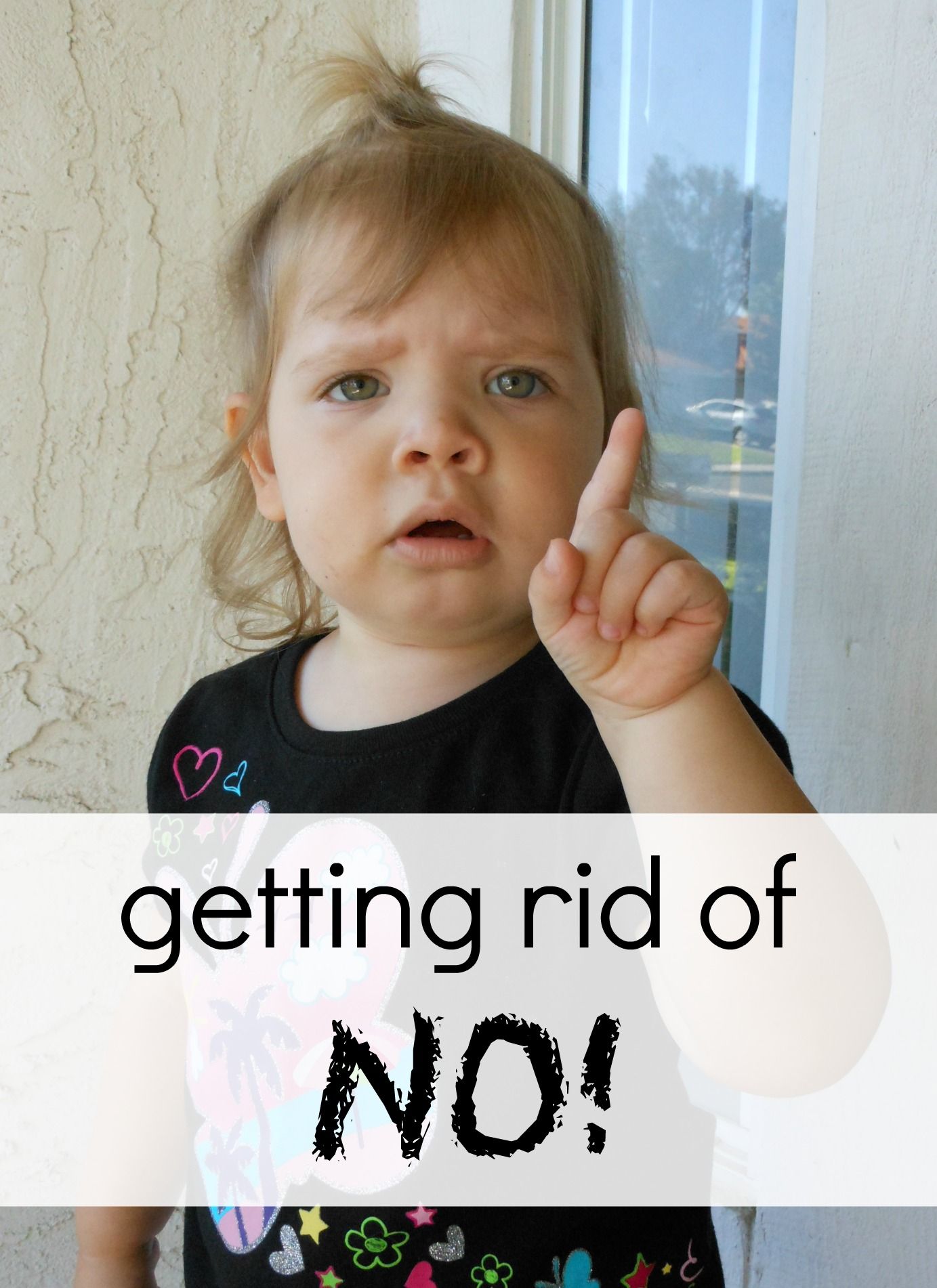Toddlers: How To Get Rid of NO!

What is the best way to get rid of ‚Äúno‚ÄĚ in my toddler‚Äôs vocabulary?
Expert: Marsha Greenberg
Why toddlers say no is important to understand. The journey of childhood is to individuate and around 18 months of age a toddler begins to hear the sound of their voice in his or her head. That beginning awareness opens vast areas of cognitive development. With that change, toddlers have a greater awareness that they are a separate individual from you. Saying no is the way that they begin to experience and experiment with boundaries. When toddlers say no we as parents become aware in deeper ways that our children have competing needs with our own and we have to make room for that while we also evaluate how to set limits and hold the line. So bottom line you cannot get rid of no in a toddler‚Äôs vocabulary but you can learn how to help her adjust when there are no choices but to go to bed or hold your hand to cross the street. Start by acknowledging her resistance ‚ÄúI know you do not want to go to bed but it is time now‚ÄĚ then try following with ‚ÄúI will help you clean up and we will walk in the room and see if we can find the toothbrush and do the toothbrush dancing song before you get your pajamas on and we read stories.‚ÄĚ This does not mean that she will readily come but you have laid down the path and then the work is to hold the line steadily not angrily. As much as we need our toddlers to say yes they are not wired that way-pushing back, resistance, problem solving are all part of their emotional growth, finding how to work with it is our parenting challenge.
Mom: Mina McKiernan
The good news is that as annoying as the word ‚Äėno‚Äô can be when your toddler starts using it incessantly, try to remember that is a normal phase that all children go through in their never-ending quest for independence. One strategy is to offer your child choices. The options can have the same result, but by letting them make a decision, you allow them to feel in control. This can be as simple as ‚Äúwould you like to sit in this chair or that one at lunch?‚ÄĚ Either way they will sit down to eat. Also, remember that children parrot our behaviors so try to set a good example by being aware of how often you use the term ‚Äėno‚Äô and make an effort to come up with other responses.
babybites’ team: Heather Ouida
So believe it or not, this one took me a while but as obvious as this is, I stopped asking Yes or No questions (because the answer is always no!) and started giving choices. Instead of saying, ‚ÄúAre you ready for your nap?‚ÄĚ I would say, ‚ÄúDo you want to take you nap now or in five minutes?‚ÄĚ They would of course always say, ‚ÄúIn 5 minutes‚ÄĚ, so then I would set a timer for 5 minutes. Instead of saying, ‚ÄúDo you want chicken for dinner?‚ÄĚ I would say, ‚ÄúDo you want chicken or pasta?‚ÄĚ I also tried to not to say ‚ÄúNo‚ÄĚ so much myself (even though I wanted to say it all the time!). Instead of, ‚ÄúNo ‚Äď don‚Äôt touch that!‚ÄĚ I would try to say, ‚ÄúThat‚Äôs fragile, it‚Äôs not a toy. But you can play with this instead.‚ÄĚ Of course they still said no but at least it was not quite as much.
Toddlers Are A**holes: It's Not Your Fault...

View
How Toddlers Thrive: What Parents Can Do Today for...

View
The Happiest Toddler on the Block: How to Eliminat...

View
Parenting the Strong-Willed Child: The Clinically ...

View
The Toddler's Busy Book: 365 Creative Games a...

View
Sacred Parenting: How Raising Children Shapes Our ...

View
Freeing Your Child from Anxiety, Revised and Updat...

View
Positive Parenting: An Essential Guide (The Positi...

View

